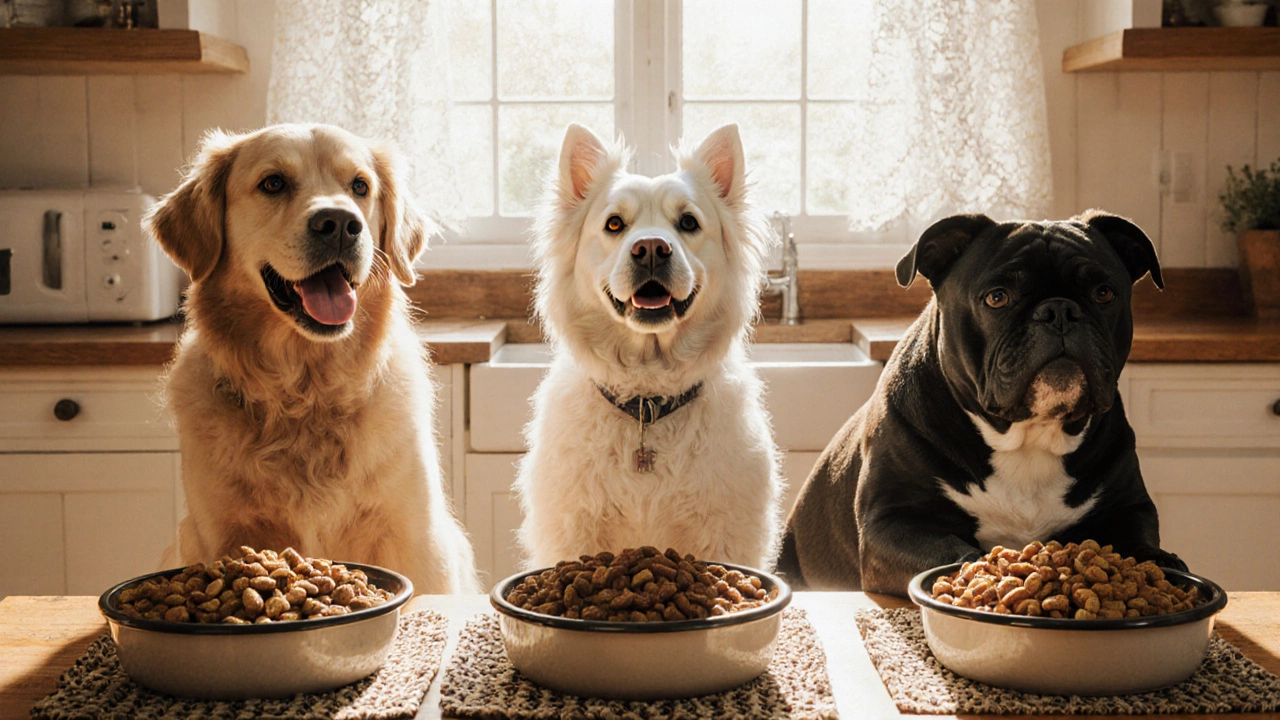Dog Food Comparison – Choose the Best Kibble for Your Pup
Feeling lost in the aisles of dog kibble? You’re not alone. Every brand promises the perfect formula, but the real test is how the food fits your dog’s needs. This guide cuts the hype and gives you a clear checklist you can use today.
Key Things to Look At
First, check the protein source. Real meat (chicken, beef, fish) listed as the first ingredient beats vague terms like ‘meat meal’ or ‘animal digest’. High‑quality protein supports muscle, coat, and energy levels.
Second, watch the carbohydrate list. Whole grains such as brown rice or oatmeal provide steady energy, while grain‑free recipes replace them with peas or lentils. Both can work, but if your dog has a grain sensitivity, lean toward the grain‑free option.
Third, scan for fillers and additives. Too many by‑products, corn syrup, or artificial colors rarely add nutritional value. A short ingredient list with recognizable foods usually means fewer unnecessary chemicals.
Fourth, consider life‑stage formulas. Puppies need more calories and DHA for brain development, while senior dogs benefit from joint‑support nutrients like glucosamine. Picking a food that matches age and activity level prevents over‑ or under‑feeding.
Finally, look at the guaranteed analysis. It tells you the exact percentages of protein, fat, and fiber. For most active dogs, aim for at least 22% protein and 12% fat. If your dog is less active or prone to weight gain, a lower‑fat option may be better.
Testing Brands Without Breaking the Bank
Buy a small bag or sample pack first. Feed it for a week while keeping an eye on stool quality, energy, and coat shine. If there’s no improvement—or you notice digestive upset—switch to another brand.
Read recent reviews from trusted sites and from owners with similar dogs (size, breed, health issues). Real‑world feedback often highlights problems that the label won’t mention.
Don’t forget price per pound. Expensive doesn’t always mean better, but the cheapest option can lack essential nutrients. Calculate the cost of a balanced diet over a month; a slightly pricier kibble that keeps your dog healthy may save vet bills later.
When possible, choose brands with a feeding trial or a money‑back guarantee. That shows confidence in their formula and gives you a safety net if the food doesn’t work.
Remember to transition slowly. Mix the new food with the old one, increasing the new portion by 25% each day over a week. This avoids gut upset and lets you compare how your dog reacts to the change.
In the end, the best dog food is the one that meets your pup’s nutritional needs, fits your budget, and makes you feel good about what’s in the bowl. Use the checklist above, test a few options, and you’ll find the right match without the guesswork.
- Morgan Ainsworth
- 0 Comments
What Dog Food Do Dogs Love the Most? Top Picks & Why
Discover which dog foods dogs love most, why they choose them, and a side‑by‑side comparison of the top palatable formulas for every breed.
View More
